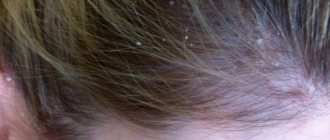The remedy for psoriasis can be either taken orally or applied to the rash. When choosing a drug individually for a patient, the doctor must take into account the form of the pathology, the severity of symptoms, and the general state of his health. To treat stage 1 or 2 disease, mainly external agents are used - ointments, creams, balms, gels. But with severe psoriasis, you cannot do without a course of taking pills. A high-quality drug should quickly cope with pain, redness and irritation of the skin, eliminate itching and burning.
Hormonal ointments
The development of any inflammatory process, including that accompanying the course of psoriasis, leads to the production of hormones by the kidneys. After they are released into the blood, a person’s well-being improves. Inflammation subsides, swelling decreases, pain and itching subside. All these properties are also characteristic of synthetic analogues of native hormones contained in ointments. The most popular external agents in the treatment of psoriasis are:
- Flucinar gel and ointment. Both dosage forms have antiexudative, antipruritic, antiallergic and anti-inflammatory effects. Flucinar copes with psoriasis of any localization, including those affecting the scalp. Gel or ointment is applied 2-4 times a day for no longer than 10 days;
- Hydrocortisone ointment. The drug was synthesized several decades ago, but is still in great demand in the treatment of psoriasis. It quickly relieves inflammation, stimulates the resorption of swelling, and reduces the severity of itching and burning. Hydrocortisone ointment is used up to 3 times a day. The duration of therapy varies from 1 to 3 weeks;
- Belosalik. The ointment contains salicylic acid, which gently exfoliates keratinized scales from psoriatic plaques. The second active ingredient, betamethasone, improves skin condition by blocking the synthesis of pain and inflammation mediators. A single application of Belosalik during the day for 3 weeks is sufficient.
Many hormonal ointments are intended for the treatment of psoriasis. These are Akriderm SK, Triderm, Lorinden A and C, Celestoderm, Mesoderm. The inexpensive domestic drug Sinaflan copes well with psoriatic plaques.
Modern methods of treating psoriasis
According to K. Reich, mild forms of the disease, which affect less than 3–5% of the body area and do not produce significant changes in the patient’s immune status, require only local treatment. Moderate and severe psoriasis is a systemic, immune-mediated inflammatory process that leads to the development of concomitant pathologies or aggravates them, and they themselves have a huge impact on the patient’s health and quality of life [6–9].
The problem of treating psoriasis does not lose its relevance and, despite the emergence of new modern treatment methods, remains a complex task that requires a personalized and, in the case of severe comorbidities, a multidisciplinary approach [10].
There is a wide choice of local and systemic drugs for the treatment of psoriasis, most of which have an immunomodulatory effect. When choosing personalized therapy, the prevalence and severity of psoriasis, the stage of the psoriatic process, its clinical form, as well as the patient’s attitude towards the disease are taken into account. Thus, when the rash is localized on open areas of the skin - the face, scalp and hands, the disease has a significant impact on the quality of life and causes severe psycho-emotional experiences [11]. According to a study by G. Krueger et al. (2001), 40% of psoriasis patients were disappointed with the ineffectiveness of the treatment received and 32% considered the treatment insufficient [12].
Systemic therapy for psoriasis
Systemic glucocorticoids in tablet form are used extremely rarely due to numerous side effects. However, as an “ambulance” drug to stabilize the psoriatic process at a progressive stage, erythroderma, it is advisable to use prolonged systemic glucocorticoids for intramuscular administration in the form of short courses. This approach to therapy avoids adverse side effects [2].
Methotrexate has been used in the treatment of psoriasis for more than 40 years. The mechanism of its action is associated with inhibition of dihydrofolate reductase, which converts dihydrofolic acid into tetrahydrofolic acid and is a donor of one-carbon groups in the synthesis of purine nucleotides and thymidylate, necessary for DNA synthesis. In this regard, simultaneous administration of folic acid helps to avoid metabolic anemia [13].
Cyclosporine A is a cyclic polypeptide isolated from the fungus Tolypocladium inflatum gams, has an immunosuppressive effect by suppressing the activity of T cells and reducing their antigenic sensitivity through the interleukin mechanism. The drug is highly effective in the treatment of widespread torpid psoriasis, psoriatic erythroderma [14, 15].
Since 1997, second-generation aromatic retinoids, the basis of the chemical formula of which is acitretin, have been used to treat refractory forms of psoriasis. The drug inhibits the proliferation of epidermal cells, normalizes the process of keratinization, and has an immunomodulatory effect. The effectiveness of the drug depends on the dose: higher doses lead to faster resolution of psoriatic rashes [16].
Relatively recently, a new group of drugs has appeared - biological drugs, which include recombinant protein substances synthesized biotechnologically from living cells of animals, plants and microorganisms. Indications for the prescription of biological drugs are severe forms of psoriasis resistant to other systemic drugs [17, 18].
Treatment of moderate and severe forms of psoriasis (more than 10% of the body surface) is carried out taking into account comorbid conditions, such as metabolic syndrome, cardiovascular diseases, diabetes mellitus, non-alcoholic fatty liver disease, dyslipidemia. According to statistical studies, such comorbid conditions in psoriasis are observed more often than in the general population [19]. Thus, when treating psoriasis, it is necessary to take into account the risk of side effects from systemic therapy in accordance with comorbid conditions identified individually in each patient. Indeed, some pharmacological drugs may negatively affect cardiovascular and metabolic comorbidities. The association between psoriasis and cardiometabolic disorders has important clinical implications. First, systemic therapy for psoriasis may negatively affect metabolic comorbidities, especially in the case of continuous and long-term treatment. In particular, methotrexate should be prescribed with caution in obesity, diabetes mellitus, and non-alcoholic fatty liver disease due to an increased risk of liver fibrosis [20]. Cyclosporine A can cause or aggravate arterial hypertension, increase insulin resistance and affect the metabolism of fatty acids, and is nephrotoxic.
Acitretin also promotes hypertriglyceridemia and/or hypercholesterolemia [21]. Thus, when managing patients with psoriasis, all data must be taken into account.
A special place in the treatment of psoriasis is given to phototherapy. The positive effect of ultraviolet radiation on psoriatic skin is associated with selective inhibition of the T-cell component of immunity. According to the literature, the following directions of action of phototherapy are distinguished: anti-inflammatory, immunosuppressive and antiproliferative [22]. Photoimmunological effects are associated with the depth of penetration of ultraviolet rays. UVB rays affect epidermal keratinocytes and Langerhans cells, UVA rays penetrate into the deeper layers of the skin and affect dermal fibroblasts, dendritic cells and cells of the immune system. The positive effect of ultraviolet radiation is due to apoptosis of T cells, a decrease in the number of Langerhans cells, changes in the production of cytokines, growth factors (EGF, VEGF), adhesion molecules and neuropeptides [2, 23]. Prescribing phototherapy is advisable for common skin processes.
In the treatment of psoriasis, photochemotherapy (PUVA therapy) is used - the combined use of long-wave ultraviolet rays (UVA) (320–400 nm) and a photosensitizer (8-methoxypsoralen). PUVA therapy is one of the most effective methods of treating psoriasis; its use is advisable for widespread vulgar and exudative psoriasis, persistent disease, severe infiltration. Treatment is carried out according to the method of irradiation 3 or 4 times a week, on average the course is 20–30 procedures [22].
Currently, selective phototherapy, a combination of medium-wave radiation (280–320 nm), has lost its position and is prescribed less and less for the treatment of psoriasis. The indication for its use is psoriasis, characterized by weakly infiltrated plaques.
Narrow-wave UVB therapy with an emission peak at a wavelength of 311 nm is comparable in high therapeutic efficiency to PUVA therapy, but unlike it does not require the use of a photosensitizer. It is carried out according to the method of irradiation 3-5 times a week with a course of 20–30 procedures.
For the treatment of limited plaque psoriasis in the stationary stage, a highly effective therapeutic technique is the excimer laser, which allows delivering high-intensity monochromatic light with a wavelength of 308 nm only to the affected area of the skin [2, 22, 23].
Local therapy
A fairly large selection of local remedies for the treatment of psoriasis includes, in particular, traditional ointments containing tar, naphthalan, ichthyol and salicylic acid.
When choosing topical therapy, an individual approach is important, on which the compliance of the patient with psoriasis will depend. Thus, due to the cosmetic unacceptability of treatment, 40% of patients do not comply with the prescription regimen [24].
The effectiveness of topical corticosteroid drugs in the treatment of psoriasis is based on a pronounced anti-inflammatory and immunomodulatory effect associated with the mechanism of the hormone receptor complex, which penetrates the nucleus of the target skin cell and increases the expression of genes encoding the synthesis of peptides that inhibit phospholipase activity. This mechanism leads to a decrease in the formation of inflammatory mediators from phospholipids. Combination corticosteroid ointments and creams with salicylic acid are especially preferred. Local corticosteroid drugs are not indicated for long-term continuous treatment and require combined and rotational regimens, since long-term use can lead to the development of side effects such as skin atrophy, hypertrichosis, telangiectasia, steroid acne and suppression of adrenal function [25].
Synthetic analogues of vitamin D3 have proven themselves to be highly effective antipsoriatic agents. The best known of this group is calcipotriol. The principle of action of the drug is based on the keratoplastic effect of vitamin D3: it inhibits the proliferation of keratinocytes and models epidermal differentiation, and also has an immunomodulatory effect, in particular reducing the expression of IL-2 and IFN-γ [26]. Calcipotriol has a cumulative effect, and therefore the therapeutic effect is observed after 1–2 weeks. from the start of treatment.
Unlike topical steroids, long-term use of this group of drugs is possible. To achieve the maximum therapeutic effect, a combined prescription of calcipotriol and topical steroids is possible.
The action of local calcineurin inhibitors (tacrolimus and pimecrolimus) is associated with blocking signal transduction of T lymphocytes through inhibition of calcineurin. It is most advisable to prescribe this group of drugs in case of localization of rashes on the face, since they do not have the same side effects as topical steroids [25].
The importance of using emollients, or softening agents, in the treatment of psoriasis is beyond doubt: they soften the skin, reduce flaking and dryness, increase its hydration, especially after ultraviolet exposure; help reduce itching. The greatest effect is achieved when applying emollients to damp skin after contact with water (bath, shower). The use of emollients in complex therapy of psoriasis reduces the total cost of treatment as a result of achieving stabilization of the disease and the onset of remission in a shorter period of time, which helps reduce patient stay in the hospital [27].
Thus, the problem of treating psoriasis remains relevant and remains a complex task, aimed primarily at a personalized approach to therapy, on which the compliance of the patient with psoriasis and the prospective management of patients, taking into account comorbidity, will depend.
Non-hormonal ointments
Medicines without hormones are much safer. They have a gentle, gentle effect on the body and rarely show side effects. These drugs are used to eliminate mild or moderate symptoms of psoriasis. They cannot cope with acute inflammation. Here is a list of the most popular non-hormonal ointments:
- Balsamic liniment according to Vishnevsky. A time-tested product with birch tar and xeroform soothes irritated skin within an hour. And thanks to castor oil, it retains the moisture necessary for tissue regeneration. Liniment is applied under breathable dressings up to 3 times a day until the skin is completely restored;
- Naftaderm. The chemical composition of the ointment with naftalan oil is saturated with mineral oils, trace elements, and aromatic hydrocarbons. It is characterized by powerful anti-inflammatory and anti-exudative properties. The ointment is applied to the rash 2 times a day. The course of treatment is individual, but does not exceed 1 month;
- Daivonex. Pharmacological novelty with calcipotriol, a synthetic metabolite of vitamin D₃. Prevents the immune system from producing T-lymphocytes, reliably stopping inflammation. Daivonex is distributed in a thin layer on the affected areas of the skin 2 times a day. The duration of treatment is from 3 weeks to 2 months.
In the treatment of psoriasis, drugs with antihistamine action are actively used, for example, Gistan, Fenistil, Psilo-balm. Salicylic ointment exfoliates well the keratinized scales of the epidermis. And Emolium, Locobase and Elobaze nourish and moisturize the skin, reducing the risk of painful relapses.
Innovations in Russian medical science
Russian science is by no means an exception on the global map of the fight against psoriasis. At the end of 2019, after lengthy clinical studies, the drug Netakimab (Efleira), an original genetic engineering product from the Russian company BIOCAD, entered the market. The active ingredient of the drug is a llama monoclonal antibody that blocks interleukin-17. This IL-17 inhibitor is a chimeric, highly humanized antibody that has proven effective in the fight against severe and moderate forms of psoriasis. Although this development itself is not original and has foreign analogues, it has made innovative approaches to the treatment of this disease more accessible to Russian patients.
There are achievements in Russian science that have no analogues in the world. Thus, the Research Institute of OCB of the Federal Medical and Biological Agency of the Russian Federation is developing an innovative biological product based on the receptor recombinant antagonist IL-36, which, according to scientists, will be effective even in the treatment of the most severe forms of psoriasis.
In addition, Russian researchers are actively studying the possibilities of additional non-drug tools in the fight against psoriasis. Thus, in 2022, the results of complex therapy supplemented with plasmapheresis (a blood purification procedure) were published, which made it possible to speed up the treatment of patients with psoriasis in the hospital and extend the period of remission of the disease.
Treatment of psoriasis in 2022: news from European dermatology
At the annual European congress of dermatologists “Dermatological Days” in 2022, a number of antipsoriatic drugs approved and recommended for use by the EMA were presented.
Among the drugs on this list:
– local drug Enstilar based on betamethasone and calcipotriol; release form - an aerosol can that creates supersaturated foam on the surface of the skin; the effectiveness of the drug is due to a higher concentration of active ingredients and foamy consistency;
- a new type of anti-interleukin drug - Brodalumab - acts as an inhibitor of IL-17 (RA, F, C, E). The extended spectrum of action of the drug ensures its higher effectiveness compared to the previous generation of bioinhibitors;
– three new drugs that suppress interleukins IL-23 and IL-12: “Rizankizumab”, “Tildrakizumab”, “Guselkumab” - the effectiveness reaches 87%, despite the fact that the previous generation of similar drugs provided successful treatment of severe psoriasis in only 50% cases;
- a new drug that uses antibodies acting against TNFα - “Certolizumab pegol”: the innovative version has an improved safety profile, allowing the drug to be used by nursing mothers and pregnant women, since it does not accumulate in breast milk and does not pass through the placenta.
The use of new drugs and treatment protocols recommended by European doctors means only an intermediate stage in the fight against this disease. There are no absolutely effective methods for treating psoriasis at the moment, and this indicates the need to continue scientific research aimed at finding even more effective and efficient methods of antipsoriasis therapy.
Psoriasis Clinic
Psoriasis manifests itself in only one way - a scaly, milky-gray rash. It usually appears on the bends of the joints, as well as in the hair.
In order to be one hundred percent sure of the diagnosis, the dermatologist scrapes the scales and sends them for analysis, which either confirms or refutes the diagnosis. Plaques form in small areas, gradually grow and merge into one. In advanced cases of psoriasis, a scarlet eagle may appear around the plaques, which is very itchy.
Treatment of psoriasis must be done under the supervision of a good doctor in a clinic.










